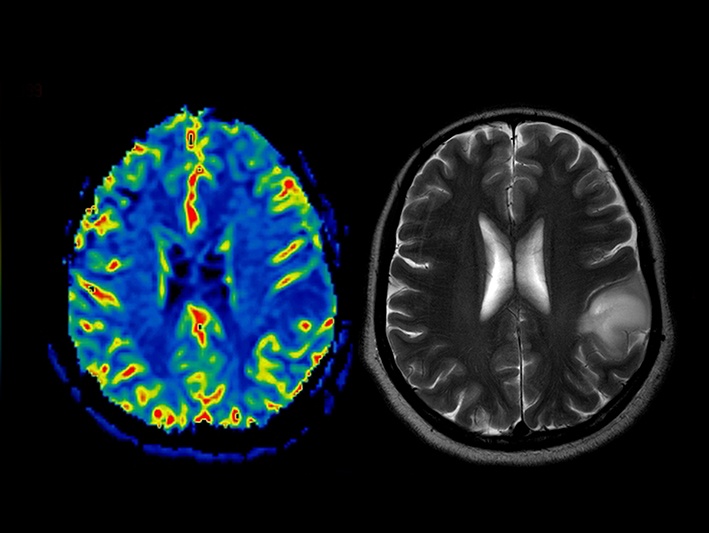Working with Perfectionism
Left untreated, perfectionism can lead to anxiety, depression, chronic stress, and become a coping strategy for shame. So how can we work with clients when perfectionism is holding them back?
Think for a moment about a lawyer with a tendency towards perfectionism.
She spends hundreds of hours on each case, preparing as though she would be presenting to the Supreme Court. Her clients reap the benefits of this work, and her consistent success lends her quite the reputation at the firm, leading her boss to continue assigning her more and harder cases.
This woman knows that she takes longer on each case than most of her colleagues. So, to be fair to her clients, she only bills them for the hours she thinks the case should have taken — causing her to ultimately lose money.
She then becomes embarrassed when people comment on how late she stays at the office, so she starts taking her work home with her. Of course, this means her work encroaches on her personal life.
She rarely sees her friends anymore. She is late for dates and is constantly distracted, causing fights with her girlfriend.
She starts procrastinating on her work for fear that she’ll make a mistake, ultimately lowering her productivity. She loses sleep and skips meals in order to iron out every wrinkle in her cases.
As her personal and professional life continue to unravel, this woman becomes depressed.

The Cost of Perfectionism
People often think of perfectionism as something to be admired, something to strive towards. After all, there is a certain thrill of mastery and sense of accomplishment for the perfectionist themself.
Not to mention — perfectionistic tendencies are constantly socially reinforced. High achievement often leads to respect from others. Someone who is a perfectionist in terms of cleanliness will be complimented on how lovely their home is, and a perfectionist at work will be thanked by their clients and praised by their boss. What employer wouldn’t want a worker who goes the extra mile?
In the midst of these benefits, we can quickly forget just how much perfectionism costs
But when perfectionism begins driving a client’s behavior, their physical and mental health, relationships, and even quality of work can suffer. That’s why it’s so important that we recognize the patterns that fuel it and build a toolbox of strategies to help our clients shift out of their perfectionistic mindset.
How Perfectionism Can Become Rooted in the Nervous System
Perfection can take root in the nervous system even before birth – making it especially difficult to unravel.
You see, in the final two months of gestation, implicit memory is starting to be formed. Because of the relative stability of the environment in the womb, that memory gives us an innate sense of control over our environment. But from birth onward, we must cope with the loss of the homeostasis of the womb, leaving many of us with a desire to reclaim control. As Joan Borysenko, PhD, once said, “Every human being on the face of the earth shares the same addiction, and that is the addiction to control.”
But perfectionism can develop later on, as well.
 Take, for example, a boy who grew up in a chaotic and sometimes dangerous family. His parents were highly critical, and mistakes were often excessively punished. So, to avoid punishment, this boy’s nervous system stayed in a perpetual state of high-alert, and he made a point to do things perfectly.
Take, for example, a boy who grew up in a chaotic and sometimes dangerous family. His parents were highly critical, and mistakes were often excessively punished. So, to avoid punishment, this boy’s nervous system stayed in a perpetual state of high-alert, and he made a point to do things perfectly.
This sort of perfectionism was adaptive for the boy, helping him to stay safe in an unpredictable environment. But this survival strategy was so important in his developmental years, it became almost obsessive as he grew older.
To him, any little mistake is a cue of danger.
Even in adulthood, perfectionism is often encouraged. Thinking back to our example of the lawyer – her boss’s trust and praise, her client’s thankfulness and relief, and her coworker’s respect all feed into the human evolutionary need to belong.
In situations like this, society demands productivity[1] to earn belongingness. But sometimes, what is asked of us isn’t what the body needs.
Part of the desire for belongingness is rooted in the body’s need for co-regulation. But perfectionism can be isolating, and as this lawyer worked excessively for belongingness in her work environment, she pushed away her friends and girlfriend – the very people who she might have been able to co-regulate with.
Thus, the nervous system keeps many perfectionists in a perpetual cycle of approval-seeking and loneliness.
The Two Distinct Types of Perfectionism
Perfectionism can often be divided into two distinct types: Personal Standards Perfectionism and Evaluative Concern Perfectionism.
In fact, according to Jutta Stahl, PhD, and her research team at the University of Cologne, perfectionists with different motivations actually respond to mistakes in different ways.
This research was based around the Frost Multidimensional Perfectionism Scale, which uses four key factors to determine the nature and extent of someone’s perfectionism:
- Concern over mistakes and doubts about actions
- Excessive concern with parents’ expectations and evaluation
- Excessively high personal standards
- Concern with precision, order and organization
Jutta and her team found that clients with high scores in Personal Standards Perfectionism showed significantly higher brain activity while doing a task specifically designed for mistakes to be made. This group also showed that brain activity slowed down after making an error, allowing them to evaluate and correct the mistake before moving forward. However, high scorers in Evaluative Concern Perfectionism did not show this pattern.
So, what does this mean for understanding perfectionists?
Personal Standard Perfectionists are self-motivated and resilient.  They tend to handle errors effectively to improve their performance going forward. Alternatively, Evaluative Concern Perfectionists are socially driven and their perfectionism stems from external judgement. Therefore, they handle error correction much less effectively.
They tend to handle errors effectively to improve their performance going forward. Alternatively, Evaluative Concern Perfectionists are socially driven and their perfectionism stems from external judgement. Therefore, they handle error correction much less effectively.
This shows us that working through perfectionism with clients is not a one-size-fits-all process. We must first distinguish between the adaptive and destructive patterns of perfectionism,[2] and then address the neurobiological roots in order to devise strategies to correct harmful patterns of perfectionism.
Steps to Disrupt a Vicious Cycle of Perfectionism
Because many clients developed their patterns of perfectionism from the pressures of their parents growing up, we may describe it as a potentially vicious generational cycle. After all, perfectionism in one’s own work often translates into expecting perfection from one’s children, thus creating a potentially generational cycle.
But while we can’t erase formative experiences from a client’s past, we can help them to break the chain from which perfectionism is derived.
That’s why often, one of the first steps in working with perfectionists involves identifying and reprocessing the trauma that created the behaviors in the first place.
For some clients, this may include looking at times they were made to feel guilt or shame by teachers, family, and peers.
For other clients, it can help to be reminded that expecting perfection is an experience that is shared by many people, across many cultures. By simply reframing those expectations as being unhealthy and unrealistic, clients can find solace and empowerment in knowing that they don’t have to instill those cultural ideas in future generations.
Perfectionism and Self-Compassion
 Many effective techniques for working with perfectionism come from the realm of compassion-based therapies.
Many effective techniques for working with perfectionism come from the realm of compassion-based therapies.
That’s because perfectionism is often coupled with other ideas that need to be addressed as well — feelings of never being good enough, a harsh inner critic, shame, and self-doubt.
So how can we help clients develop self-compassion and manage all of these self-critical feelings driving their perfectionism?
Melanie Greenberg, PhD, suggests a simple, three-step technique: Soften, Soothe, and Allow.
- Soften – The goal of this initial step is to help clients connect their brain to their body. So first, we’re going to invite the client to discover where in their body the difficult feeling is held. Once they’ve located it, we can practice breathing into the troubled area to soften the feeling.
- Soothe – Next, we’re going to help the client soothe themselves by introducing a feeling of comfort and accepting. This self-soothing can take the form of giving themselves a gentle hug, massaging their neck, or placing their hands over their heart.
- Allow – Finally, rather than letting go of the feeling completely, we want to help clients allow the feeling to be in their body. It’s important that clients are able to accept the existence of the feeling and re-direct their focus to self-acceptance anyway.
This simple process can help clients expand their window of tolerance for the distress around small imperfections, opening the possibility of behavioral experiments.
Of course, asking a client who’s a perfectionist to purposefully make a mistake as part of a behavioral experiment can be a tough sell. So, as we move into that step, it may be useful to look at where in their lives they already allow small imperfections. Does a client allow their children to leave for school without making their beds? Then perhaps they might leave for work one morning without making theirs.
The less impact a behavioral experiment has on the primary focus of their perfectionism, the more tolerance a client will have for it. By showing that each little imperfection doesn’t add up to disaster in this way, we can eventually help clients start applying that idea to their main goal.
References
Want more ideas and strategies you can use with your clients today?
To learn more about the roots of perfectionism, and other sustainable strategies to alleviate it, check out some of our courses:

How to Work with a Client’s Perfectionism
3.75 CE/CME Credits Available

Working With Core Beliefs of “Never Good Enough”
4 CE/CME Credits Available

Master Series on the Clinical Application of Compassion
14 CE/CME Credits Available

Expert Strategies for Working with Impostor Syndrome
3.25 CE/CME Credits Available